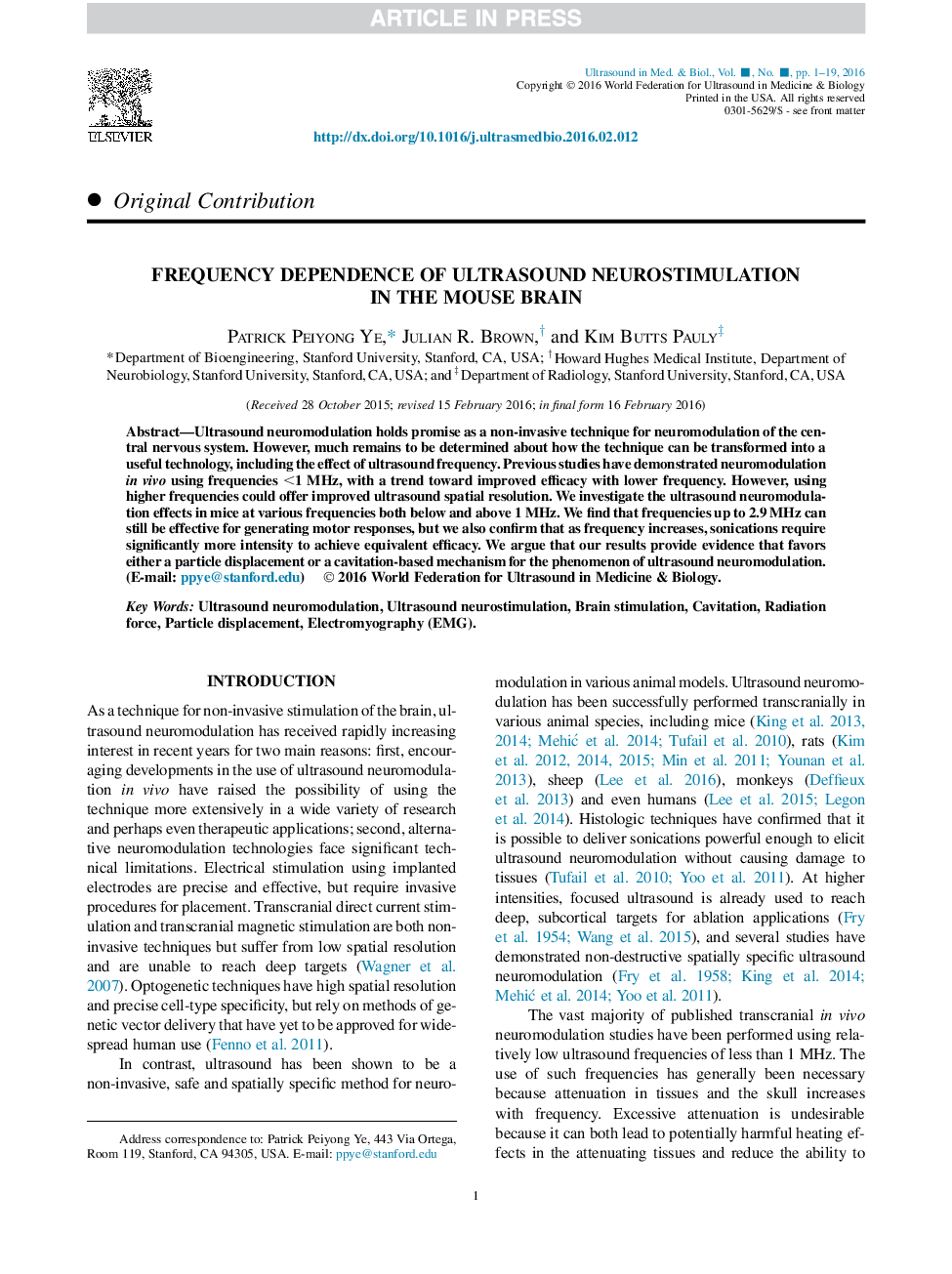| Article ID | Journal | Published Year | Pages | File Type |
|---|---|---|---|---|
| 10691109 | Ultrasound in Medicine & Biology | 2016 | 19 Pages |
Abstract
Ultrasound neuromodulation holds promise as a non-invasive technique for neuromodulation of the central nervous system. However, much remains to be determined about how the technique can be transformed into a useful technology, including the effect of ultrasound frequency. Previous studies have demonstrated neuromodulation in vivo using frequencies <1 MHz, with a trend toward improved efficacy with lower frequency. However, using higher frequencies could offer improved ultrasound spatial resolution. We investigate the ultrasound neuromodulation effects in mice at various frequencies both below and above 1 MHz. We find that frequencies up to 2.9 MHz can still be effective for generating motor responses, but we also confirm that as frequency increases, sonications require significantly more intensity to achieve equivalent efficacy. We argue that our results provide evidence that favors either a particle displacement or a cavitation-based mechanism for the phenomenon of ultrasound neuromodulation.
Related Topics
Physical Sciences and Engineering
Physics and Astronomy
Acoustics and Ultrasonics
Authors
Patrick Peiyong Ye, Julian R. Brown, Kim Butts Pauly,
